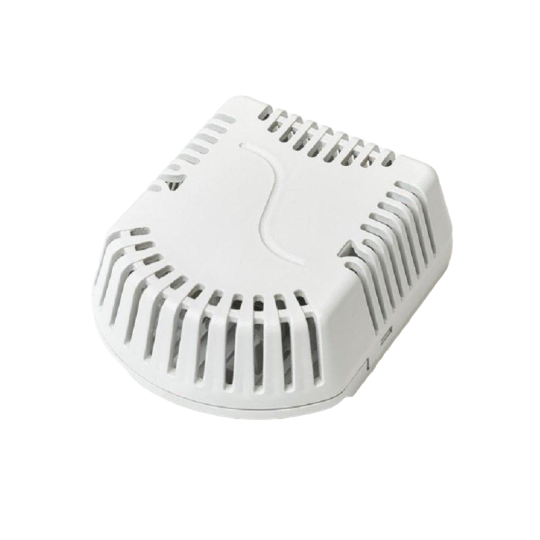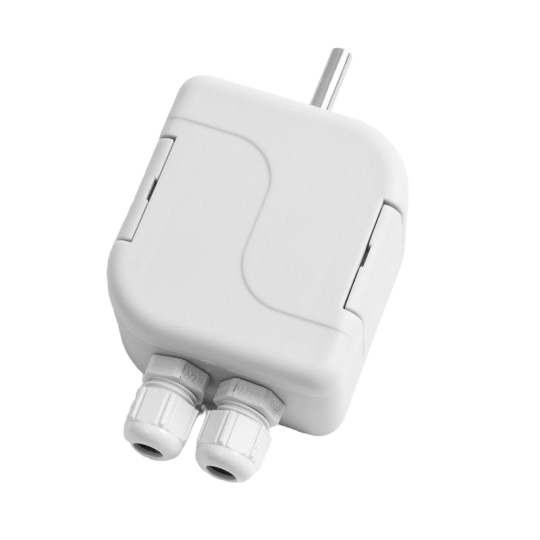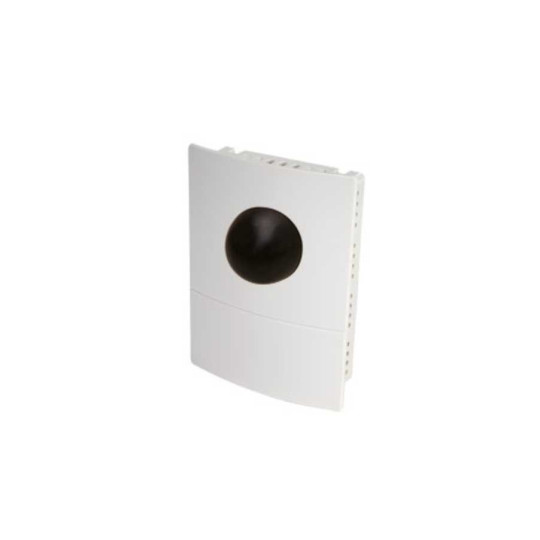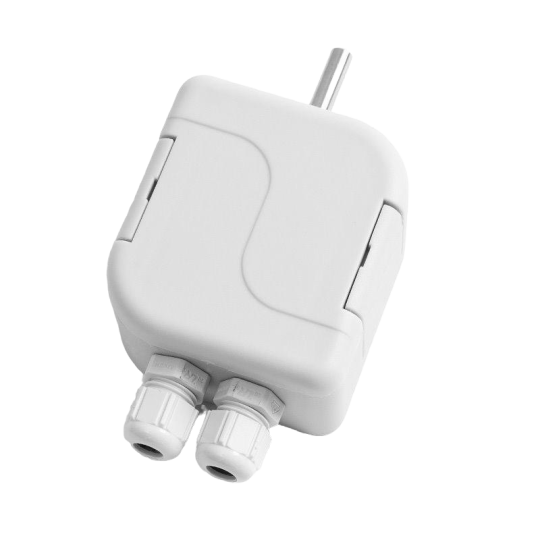
Product features Outside temperature probe with metal head
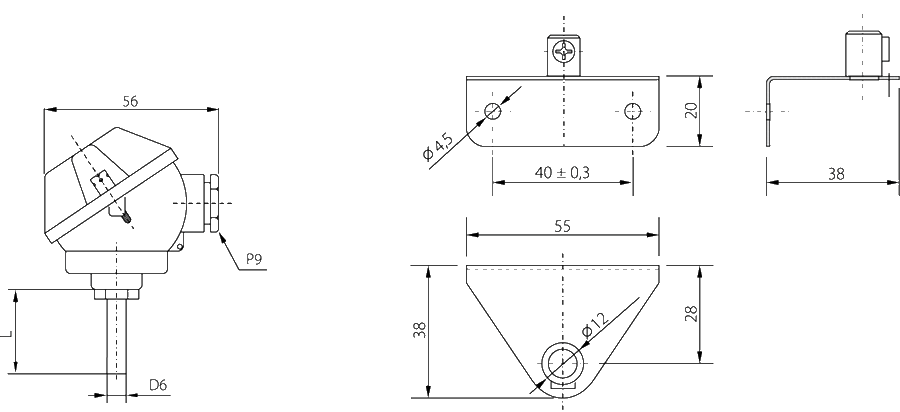 |
ACCESSORIES
- central metal support K110
DECLARATION, CERTIFICATES, CALIBRATION
- The manufacturer provides an EU declaration of conformity.
- Calibration - The final metrological control - comparison with standards or working instruments - is carried out for all products. The continuity of standards and work measurement instruments is ensured within the meaning of article 5 of the law. n ° 505/1990 on metrology. The manufacturer offers the possibility of supplying the calibrated sensors in the laboratory (according to the requirements of EN ISO / IEC 17025) or in an accredited laboratory.
| Sensor type | NK-510 | Footnotes |
| Sensitive element type | Point 1000/3850 | |
| Trip | 4 to 20 mA | |
| Standard measuring ranges |
-30 to 60 ° C 0 to 35 ° C 0 to 100 ° C 0 to 150 ° C |
ambient temperature around the connection head -30 to 70 ° C |
| Measurement error | ± 1 ° C depending on the air flow speed | |
| Voltage supply (U) |
11 to 30 V DC | recommended value 24 V DC |
| Resistance to load Rz | 150 Ω for 12 VDC power supply 700 Ω for 24 VDC power supply |
|
| Output signal - failure of detection elements |
> 24 mA | |
| Output signal - short circuit of the detection element |
<3.5 mA | |
| OTHER PARAMETERS | |
| Precision class |
Sensitive elements Ni: class B, t = ± (0,4 + 0,007 t), for t ≥ 0; t = ± (0,4 + 0,028 | t |), for t ≤ 0 in ° C; Elements sensitive to pt: class B according to EN 60751, t = ± (0.3 + 0.005 | t |) in ° C NTC 20 kΩ: ± 1 ° C for the range from 0 to 70 ° C |
| Connection of sensors |
according to the wiring diagram |
| Standard rod length |
for resistance output: 25 mm for 4 to 20 mA output: 50 mm |
| Response time |
τ0,5 <9 s (in an air flow at 1 ms -1 ) |
| Recommended wire section |
0,35 to 1,5 mm 2 |
| Isolation resistance |
> 200 MOhm at 500 V DC, 25 ° ± 3 ° C; humidity <85% |
| Ingress protection | IP 54 according to EN 60529 |
| Material of the stem |
DIN 1.4301 stainless steel |
| Connection head type | LIMATHER MA |
| Connection head material |
aluminum alloy |
| Operating conditions |
ambient temperature: -30 to 100 ° C; -30 to 70 ° C with a converter |
| relative humidity: max. 100% (at room temperature 25 ° C) | |
| atmospheric pressure: 70 to 107 kPa | |
| Weight | about 0,2 kg |
Please note: le manufacturer reserves the right to modify the design and technical characteristics of the products. For real information, please always contact your dealer.
SENSOR INSTALLATION AND MAINTENANCE
Before connecting the input cable, unscrew the metal connection head cover. The input cable is then connected to the corresponding terminals in the loose grommet according to the wiring diagram. Recommended wire section: 0,35 to 1,5 mm2, the outer diameter of the circular cable section can be 4 to 8 mm.
If the input cable is laid near high voltage conductors or those supplying equipment creating a disturbing electromagnetic field (e.g. equipment with inductive load), shielded cable should be used. To ensure IP 54 ingress protection, the grommet must be tightened and the cover screwed on after connecting the inlet cable.
The openings for the installation of the stainless steel brackets are drilled according to the dimensional draft, where the hole diameters and the distances between the hole centers can be found.
After installing and connecting the sensor to the appropriate electrical equipment, the sensor is ready for use. The sensor does not require any special servicing or maintenance. The sensors can be placed in any operating position, but the grommet must not be pointing upwards.
MODIFICATION AND CUSTOMIZATION
FOR MANUFACTURED STANDARD DETECTORS, THE FOLLOWING PARAMETERS CAN BE CHANGED:
- possibility of coating two sensitive elements
- possibility to encapsulate non-standard temperature sensors (DALLAS, TSic, KTY, SMT, etc.)
- Accumulation class A (except sensors Ni 10000/5000, Ni 10000/6180, T1 = Ni 2226, NTC resistor 20 kΩ)
- three or four wire connection option
These products can interest you

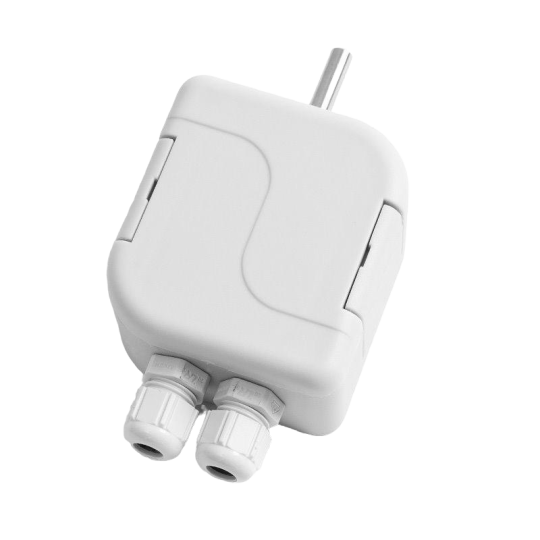
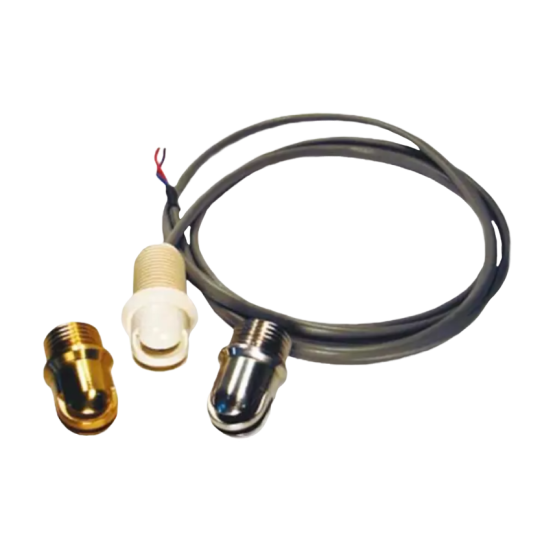
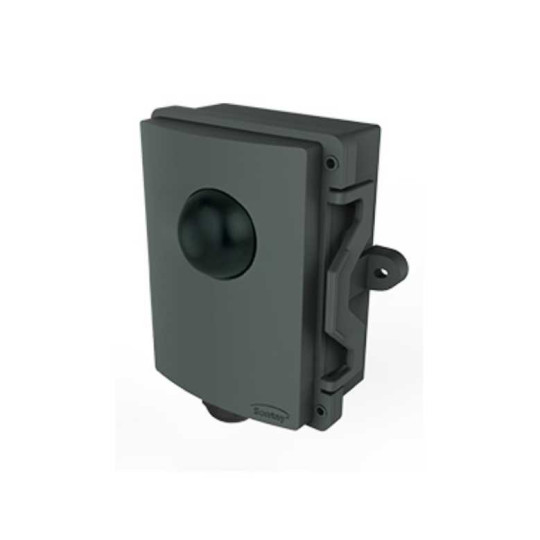
Black ball outdoor temperature probe - Radiation probe
- Exterior
- -30 to +70 ° C
- Sensor of your choice
- Without cable
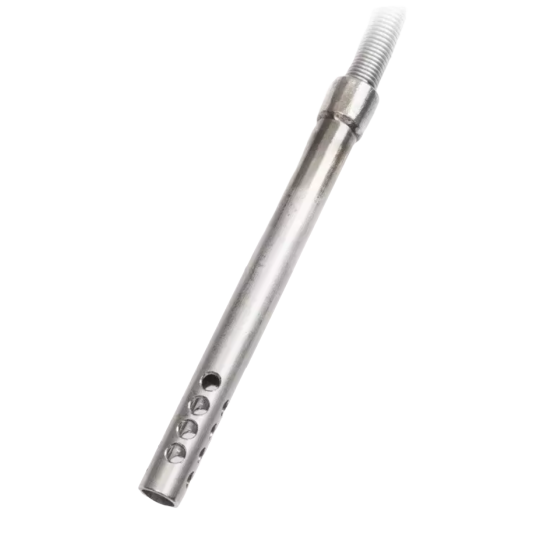
Fast response time probe 10mm, 50 ° C to 350 ° C
- Exterior
- -50 to 350 ° C
- Sensor of your choice
- IP 50 to 67
